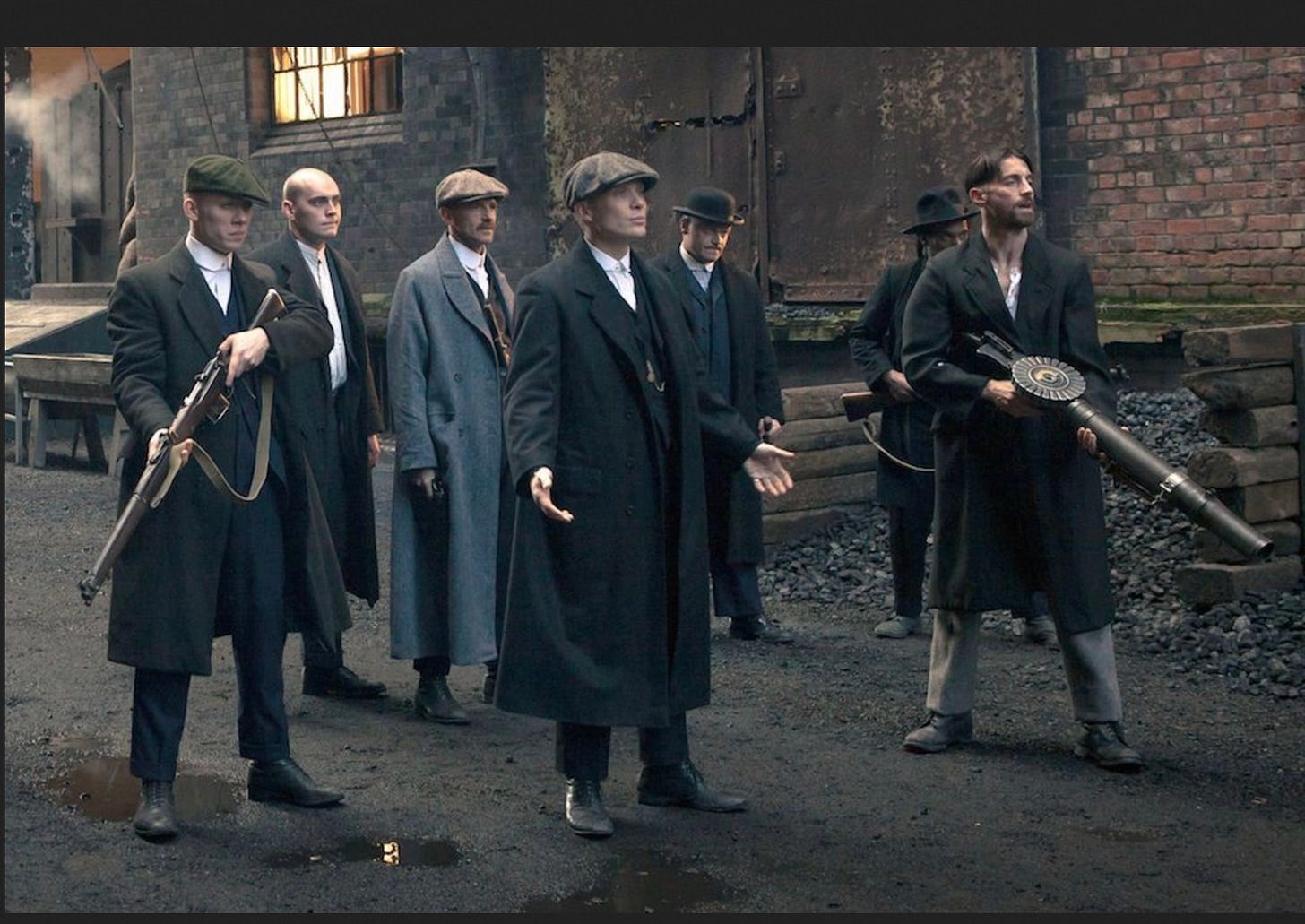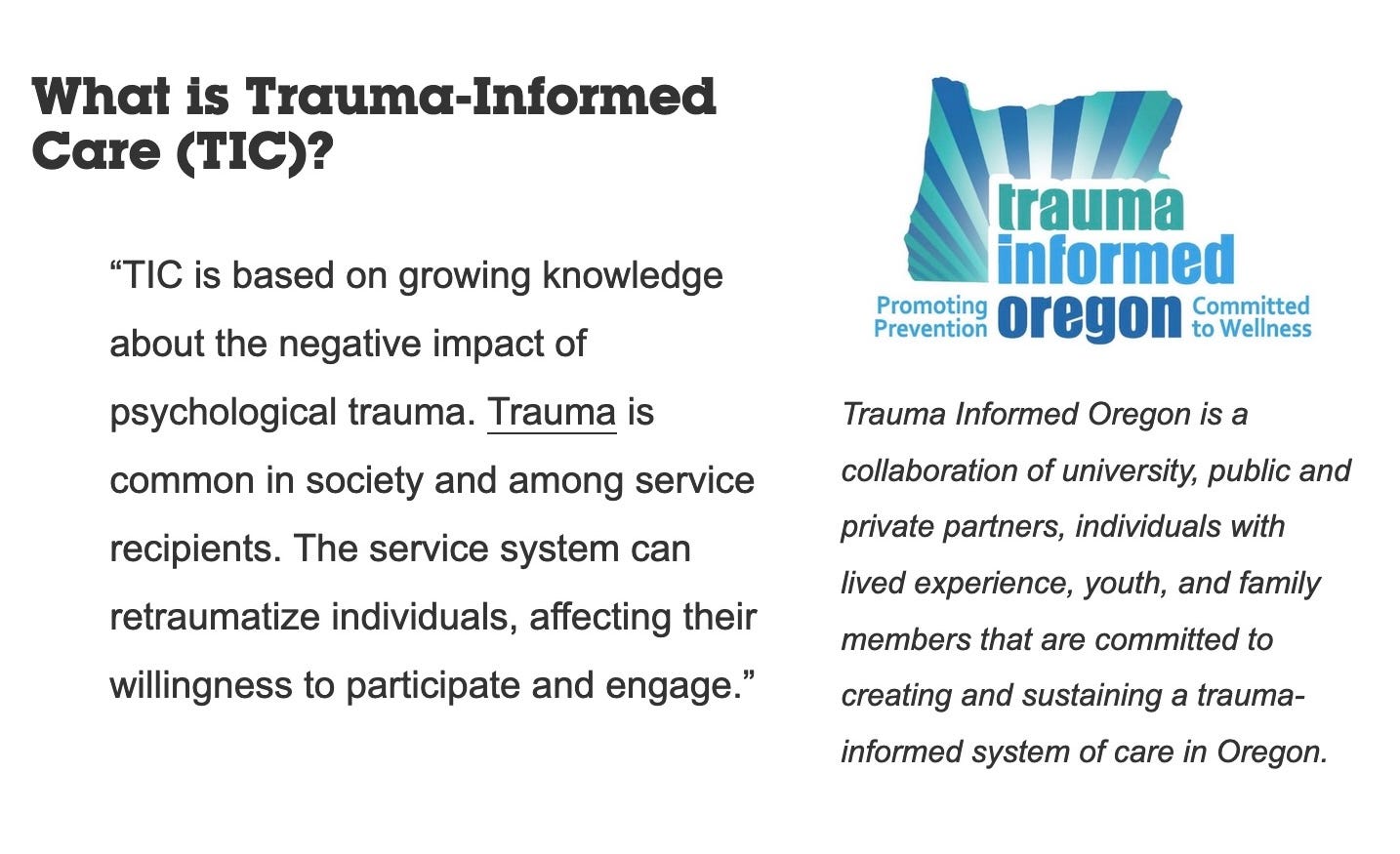Part One is here. Content note for Part Two: trauma, PTSD and Klingons.
I was watching an episode of Star Trek: Strange New Worlds with my partner when it occurred to me how often, in television and films, the characters’ traumatic backstories drive the plot. It’s just another ordinary day in space until something happens to jar a character or characters’ terrible memories of, say, the Klingon War -- and then boom (sometimes literally) the story is off and running. You would think a society that had invented the warp drive would also have found more effective ways of treating PTSD, but the narrative seems to require that they haven’t.
It’s not just sci-fi and fantasy; historical dramas do it too. For example, the series Peaky Blinders, set in the aftermath of World War I. I don’t like violence, so I had my eyes squeezed shut and my hands over my ears for approximately 25% of it, but I couldn’t stop watching because I was riveted by the characters and the story. It’s one long study of PTSD. (Also entrepreneurship! So, you know, irresistible.)
What does all this have to do with people getting acupuncture, you’re probably wondering.
Ever since the caseworkers of CareOregon introduced us to the topic of trauma informed care back in 2012, it’s been a focus for WCA. It’s a foundational element of how we teach acupuncture at POCA Tech and how we provide acupuncture in our partnerships with organizations like CODA.
I realize that some people think that trauma informed care is a meaningless buzzword, an irritating new form of political correctness. This drives me up a wall. Apologies for swearing, but I can’t think of a better way to say it: trauma makes shit happen. Sometimes good shit, as in post traumatic growth, but often — not so good.
At WCA we recognize that trauma creates obstacles for patients trying to access acupuncture, and for acupuncturists trying to serve them. Not abstract, philosophical obstacles — hardcore logistical problems. The more acupuncture you provide — and WCA provides a lot of it, to the tune of a thousand treatments a week — the more you have to take these problems into account.
For everyone on the internet who doesn’t already know that I have complex PTSD, let’s clear that up. (I’m sure at least one person is thinking, “Well that explains a lot”.) I’m a trauma nerd not just because it’s fascinating and professionally useful, but because understanding how trauma works has made my life so much better on a practical level.
PTSD isn’t categorized as an anxiety disorder, but it has a lot of the same neurobiological features. Fear conditioning circuits in the brain are over-developed and over-active. Here’s a list of common trauma triggers in healthcare settings, according to Laurie Lockert MS:
authority figures
sensory cues of past events
lack of power/control
feeling threatened or attacked
caught by surprise
feelings of vulnerability and rejection
sensory overload
shaming
When people get triggered, things go off the rails. Trauma informed care is about trying to avoid triggering people whenever possible. We don’t want to cause distress, of course, but also we don’t want things to go off the rails in the clinic. One of trauma informed care’s guiding principles is trustworthiness and transparency.
This is where it’s easiest for me to speak from personal experience. Just like I understand that crossing a threshold is challenging for people with limited resources because I grew up working class, I understand that crossing a threshold — especially into an unfamiliar healthcare setting — is difficult for people with trauma because when you have PTSD, getting overwhelmed is always a possibility. And you know what helps prevent that? Transparency! No surprises and no pressure. Being able to see what’s going on, having everything important out in the open, being aware of what’s going to happen before it actually happens — and knowing you can easily back out if it’s too much.
Granted, providing acupuncture in a group setting — whether it’s community acupuncture in a clinic like WCA, or 5NP which can happen almost anywhere1 —doesn’t automatically resolve every trauma-related barrier that someone might have. Some people don’t feel safe in a group setting, so it won’t work for them, and some people are too afraid of needles for acupuncture to be therapeutic. In general, though, offering acupuncture to a new patient in a setting where it’s easy and normal for them to see other people being treated, and/or to bring someone else with them for support, can make it easier to cross the threshold into receiving acupuncture.
Trauma informed care is a deep, deep rabbit hole, so let’s go back to Star Trek for a minute. There’s a lot to love about Strange New Worlds; I bet I’m not the only person with a healthcare background who loves it for how it portrays healthcare providers.
Healthcare providers with trauma histories. The episode “Under the Cloak of War” (Subtitle: “Some things break in a way that can never be repaired. Only managed”) is a kind of object lesson about the importance of being trauma informed. It shows what happens when an organization puts pressure on traumatized people to behave as if they’re not traumatized, for appearances’ sake. Things go off the rails, as you might expect, and that’s the plot.
One of the ongoing aims of this newsletter is to answer the question, why does WCA do what it does, in the way that it does it? A lot of the ways that our clinics are different from other acupuncture clinics, or from other healthcare settings, are intended to make it easier for people with trauma histories to engage with acupuncture by minimizing pressure — and the first person who needed that was me. I didn’t have the language of trauma informed care back in 2002, but I knew I required a different kind of environment if I was going to be able to work as an acupuncturist. And I realize there’s probably more transparency in this newsletter itself than people are used to. I’ve learned the hard way, though, that I need a lot of transparency in order to do my job. It helps me to have all the important things out in the open.
For instance, the Capitol Building






